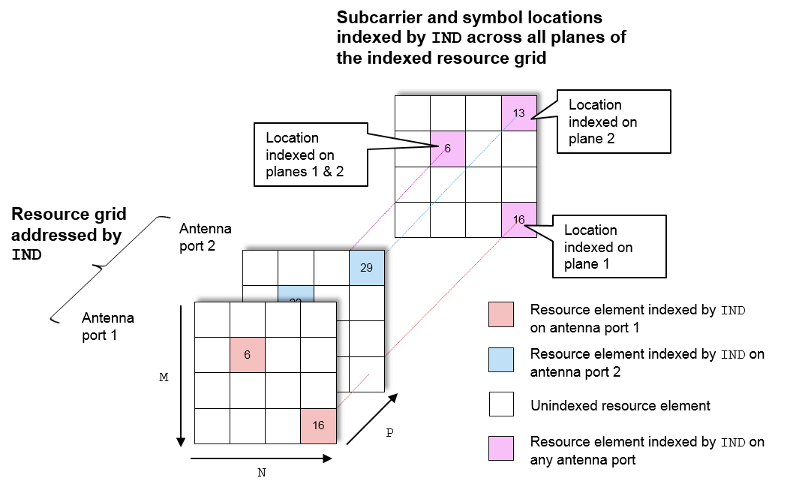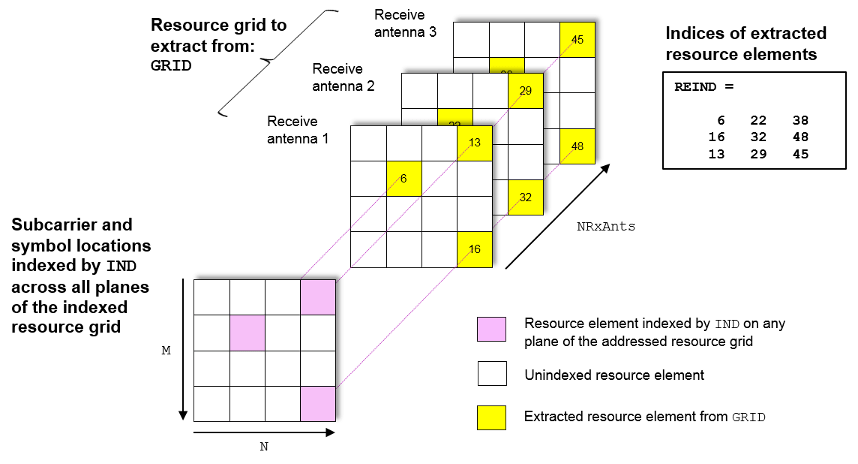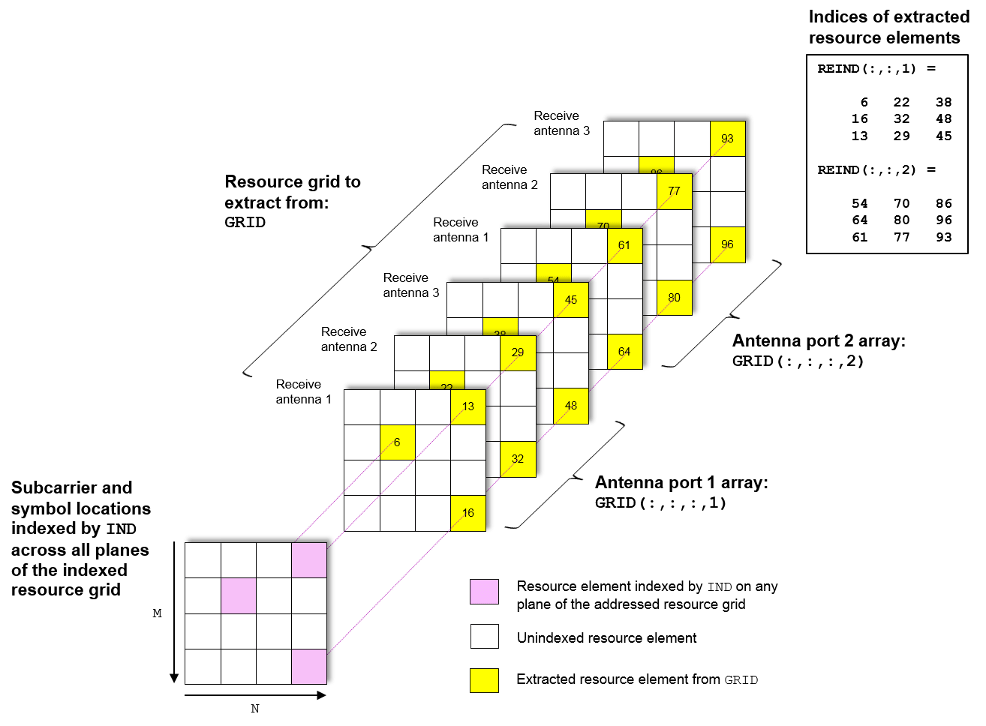nrExtractResources
Extract resource elements from resource array
Syntax
Description
re = nrExtractResources(ind,grid)grid using
resource element indices ind. The function can extract resource
elements even if grid has a dimensionality which is different than the
dimensionality of the indices ind. In this syntax, the specified
indices are 1-based using linear indexing form.
Typically, channel or signal specific functions generate resource element indices to map the channel or signal symbols to a resource grid. The indices address resource elements in an M-by-N-by-P array. M is the number of subcarriers, N is the number of OFDM symbols, and P is the number of antenna ports.
For example, the following diagram highlights resource elements of a 4-by-4-by-2 resource array. The resource element indices are in 1-based linear indexing form. The number of the antenna ports is two (P = 2).

[re1,...,reN,reind1,...,reindN] =
nrExtractResources(
extracts resource elements from multiple resource arrays using the resource element indices
ind,grid1,grid2,....,gridN)ind.
[___] = nrExtractResources(___,
specifies optional name-value pair arguments in addition to any of the input argument sets
in previous syntaxes. Use these name-value pair arguments to specify the format of the input
indices and the extraction method. Unspecified arguments take default values.Name,Value)





